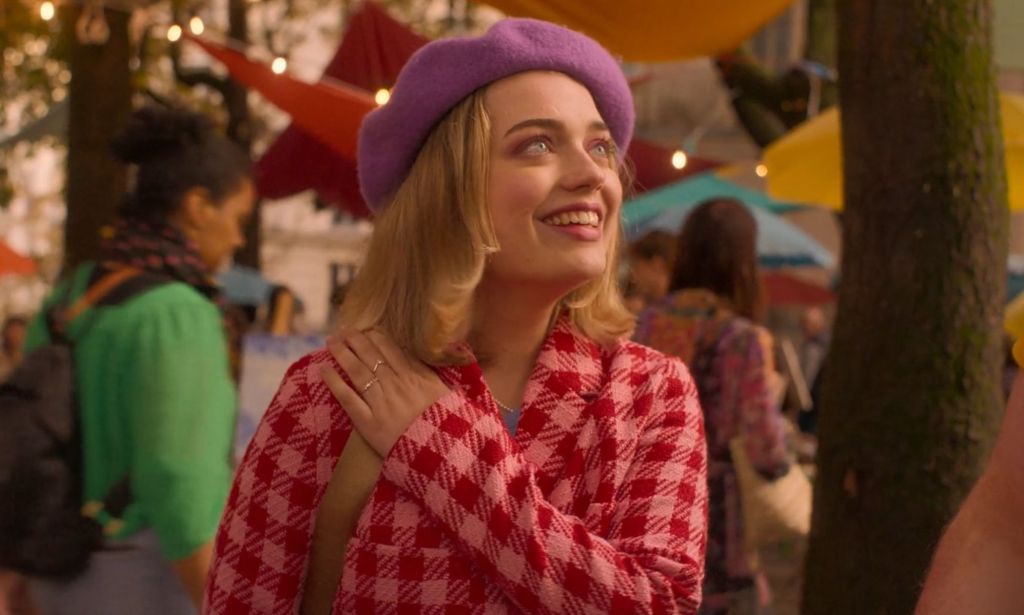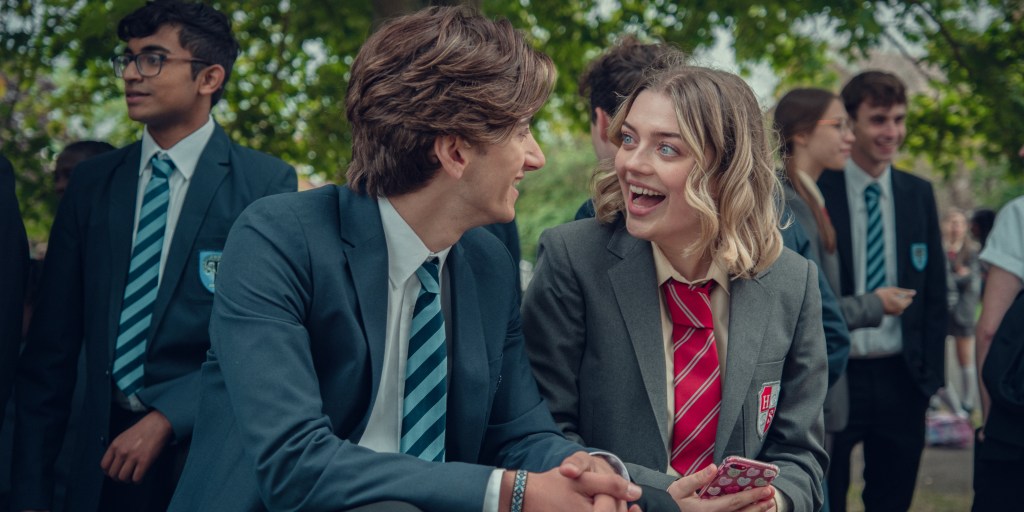How one key moment in Heartstopper sparked a debate about compulsory heterosexuality

Heartstopper tackles the burden of compulsory heterosexuality for queer femme women (Netflix)
Heartstopper is a series awash with queer awakenings and journeys of every colour, but one brief moment has particularly resonated with queer women around the impact of compulsory heterosexuality.
Coined by lesbian feminist Adrienne Rich in the 1980s, compulsory heterosexuality – or comphet as it is also known – is the idea that a woman is automatically assumed to be heterosexual and thus heterosexuality is enforced upon them by a patriarchal, heteronormative society.
Being straight is not any more “natural” than being gay, bisexual or anything else, but it is imposed on women which results in queer women – possibly unconsciously – performing straightness to the detriment of their own happiness.
This performance can include feeling compelled to date men, pretending to crush on male celebrities, pushing away all queer feelings, positioning themself as a “straight ally” and dressing and acting in a certain way – or not in a certain way.
Subsequently, queer women are forced to wrestle with their true selves, unlearn and scrutinise what they have been taught to want (sexual and romantic relationships with men) and explore what they actually want (sexual and romantic relationships with women).
Following the season two finale of Heartstopper, fans are convinced that hyper femme, self-proclaimed ally Imogen Heaney is actually queer and undergoing a sapphic awakening after a lifetime of comphet.
Fans were sent into a frenzy by Imogen giving a more-than-friendly, longing glance at her guitar-playing childhood pal Sahar at the school prom, who just happens to be bisexual.
Viewers were quick to point out the rather un-heterosexual moment, which is tinged by lesbian flag-coloured lighting, could be a hint at a potential season three plot in which Imogen realises she like likes her childhood friend.
“I believed Imogen was a lesbian [from] season one,” the fan wrote. “Then there’s Sahar. We learn that they used to be friends, but then Imogen got a boyfriend and suddenly stopped texting Sahar. A gay story as old as time, if you ask me.
“Imogen and her relationships with boys have always been written in a way that feels a lot like [compulsory heterosexuality] and there are many parallels between her and Nick that suggest they might be experiencing a similar journey of discovery.”
Another fan said: “Imogen and Sahar getting their childhood best friends to lovers arc is something I want to see.”

The evidence of Imogen’s queerness was arguably there from season one – but hidden by the compulsions of comphet in the way she navigates her relationships with boys.
She told an already-smitten Charlie that he should go out with Nick because “they have been friends for so long” and “hang out every morning”. She doesn’t mention that she was attracted to him.
This is language she echoes the following season when she says about Ben: “I’ve known him since primary school” as a key reason for being in a relationship with him.
Notably, when asked by Elle if she even likes Ben, Imogen stays quiet before changing the subject entirely.
Commenting on this, journalist Kaycia Ainsworth tells PinkNews that in her experience, comphet – described as “straight until proven gay” – is compounded by how society talks about relationships between men and women.
‘You just go along with it’
“When I was growing up, the conversation was always: ‘Can men and women ever truly just be friends?’ and these kinds of things always made you feel as though your purpose in relationships with men was always to try to date them,” Ainsworth says.
“A lot of times, the men themselves were also trying to date you and you find out after the fact, which made it feel like the whole overturn of your existence was to find and date men.
“You just kind of fall into the trap of doing that and you don’t ever actually ask yourself if you’re happy doing it. You just go along with it.”
Ainsworth adds that the way in which heterosexual culture frames relationships – where women are often seen to be complaining about their less-than-adequate male partners – made feeling miserable in a straight union seem normal.
This also reflects an element of Imogen’s relationship with Ben in Heartstopper, where he is continually unpleasant to her – “horrible” in Elle’s words – but she appears to put up with it because he is her boyfriend.
“It makes you not question the fact that you’re not having a great time because so many other women who are straight don’t seem to be having a great time either,” she says.

For many femme queer women, comphet makes realising they are not straight a minefield of confusion, particularly because society pushes the idea that women attracted to other women look and act a certain way – and femmes such as Imogen do not match that.
Saraya Haddad, a PhD researcher at the University of Birmingham’s Shakespeare Institute, explains that she did not realise she was a lesbian because her clothing style always fell on to the very feminine side of the spectrum.
“My closet put me further into the closet,” Haddad tells PinkNews. “I can’t speak to others’ experiences, but I can’t help but wonder if I wasn’t alone in feeling that I couldn’t be ‘fully gay’ because my wardrobe consisted mostly of skirts and dresses and I grew up stanning unicorns and shunning dinosaurs.”
She grew up seeing stereotypical representations of lesbians as women with “short hair who loved sports, beer and wouldn’t be caught dead in anything frilly” things to which she could not relate.
“Growing up with an affinity to all things ‘girly’, in a world which has historically reduced sapphism to a strict set of hyper-masculine norms, can add a different kind of hurdle to feeling valid within your own sexuality,” Haddad says.
Similarly, Rebecca Milsom, an ambassador for the young LGBTQ+ people’s charity Just Like Us, who describes herself as a femme bisexual, says coming to terms with her sexuality was confusing because she was always very feminine, and society equates that with straightness.
“When you are stereotypically a girly girl, society’s already telling you girls like pink, girls like Barbie, girls like men.
“So, when I was questioning [whether] I just like men or do I also fancy women or anyone else of any other gender, I’ve got society telling me: ‘Well, you fit into all these other boxes. You must fit into the I Like Men category and you’re straight’.”
Heartstopper’s Imogen could be a game-changer for representation
Milsom came out as bisexual in her teens but says she quickly went back into the closet until her 20s because people questioned and dismissed her sexuality, saying she didn’t “look” as if she could be attracted to women.
For both Haddad and Milsom, Imogen Heaney could have been a “game-changer” in terms of representation in their younger years.
“Only in my 20s have I started to see more queer femme representation in the media, at least ones who aren’t designed for the male gaze,” Haddad says.
“If I had seen characters like Max in Ginny & Georgia and Kitty in XO, Kitty, while growing up, I am certain I would have clocked my own sexuality sooner.”
Milsom added: “Having someone you can see on the screen and [think]: ‘Oh, they’re like me and they are LGBT+, so then maybe that is something that I can also be’, would have helped a lot.”
Heartstopper series one and two are available to stream on Netflix now.

